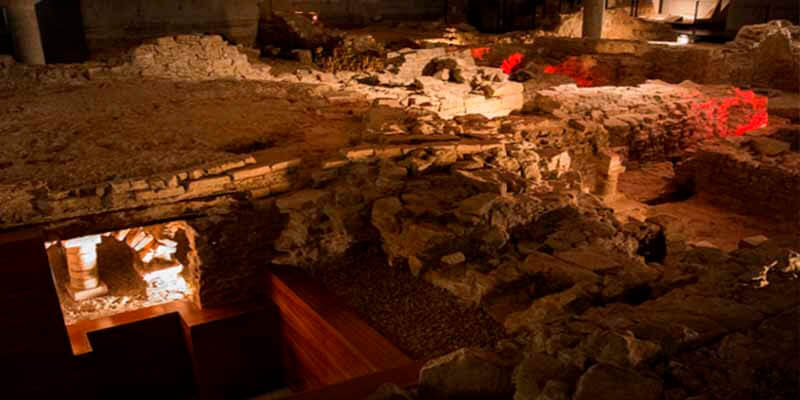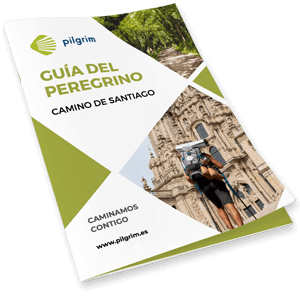Gijón
‹ Back to the stage
Gijón
- Residents: 274.290 aprox.
- Province: Asturias
Information
Get to know Gijón
In the city of Gijón is where pilgrims must decide whether they want to continue their journey along the Coast or the Primitive Way, there is a detour to Oviedo for those who want to start the Primitive route.
The rest of the pilgrims who want to continue along the Northern Way or also known as the Coastal Way must follow the direction of Avilés.
The rest of the pilgrims who want to continue along the Northern Way or also known as the Coastal Way must follow the direction of Avilés.
The Northern Way or also known as the Coastal Way must follow the direction of Avilés.
Location
How to get there
The town of Gijón has a strategic location, the city is reached by the main roads that allow road communication of the northern half of the peninsula, such as the A-8 highway, the A-66, the GJ-81, the AS-I and AS-II. In addition, there are also other roads such as the N-630 and the N-634 or the AS-19, AS-264, AS-248 and AS-266.
The city has a bus station and a train station, both offering daily lines to major cities but also to the outskirts of the city. The main lines are to Oviedo, Avilés, Madrid and Gijón.
History / Culture
What to see
Capilla de San Lorenzo
The Chapel of San Lorenzo, located in the center of Gijon, is known for housing inside a large exhibition hall built of sandstone ashlars. It is open all year round and hosts a variety of exhibitions and cultural events. It is worth noting the cover formed by a semicircular arch ending in a curved pediment and the belfry ornamented with pinnacles of pyramids and balls.

Casino de Asturias
The Casino of Asturias is a monumental building located in the center of the city of Gijón. It is a center of fun and leisure where visitors can enjoy a wide variety of recreational activities: games of chance, exhibition halls, a meeting room with the seventh art, a recreational space of last generation and a party room. All these activities can be complemented with an exclusive gastronomic offer.
In addition, the interior of the building is decorated with pieces by Dalí and paintings by Miró, among other works of art of great value.

Centro de Interpretación de la Naturaleza
The Monte Deva Nature Interpretation Center is a museum inaugurated in 2002 thanks to the restoration of the mansion in which it is located. The purpose of this space is to offer activities related to the environment.
For this purpose, the building houses in its interior different rooms, among which the visitor reception center, a library, an exhibition hall, a multipurpose room and an auditorium stand out.

Centro de Interpretación del Cine
The Interpretation Center of Cinema in Asturias is located on the fourth floor of the Casino of Gijón and offers a journey through the history of cinema in Asturias presenting its characters and its most representative works.
The Center of Interpretation of Cinema in Asturias is located on the fourth floor of the Casino of Gijón and offers a journey through the history of cinema in Asturias presenting its characters and its most representative works.
To publicize this journey, activities as varied as film series, book presentations, lectures by professionals in the audiovisual world and music recitals are held each year in its audiovisual and conference room. It also has a space for temporary exhibitions consisting of a didactic area, the cinema itself, the sound area, logistics and library.

Centro de Experimentación Pesquera
The Fisheries Experimentation Center is a museum opened in 1985 that aims to disseminate material related to fishing and the marine world in Asturias. Among these materials it is also possible to find vertebrate and invertebrate animals and sections specialized in crustaceans, fish, cephalopods and malacology.
It also has a room dedicated exclusively to the history and fishing boats.

Cerro de Santa Catalina
The Cerro de Santa Catalina is a park crowned mainly by two sculptures: at the summit you can contemplate the one known as “Elogio del Horizonte”, work of Chillida and at one of the entrances to the park is located the sculpture “Nordeste”, made by Joaquín Vaquero Turcios.
The park is located at the top of the hill, where you can contemplate the sculpture “Elogio del Horizonte”, work of Chillida.

Iglesia de San José
The Church of San José is the result of the reform of an old temple dating from the late nineteenth century by the architect Nicolás García Rivero. This temple has three naves, the central one being the longest and is composed of a portico, transept, presbytery and the aisles mentioned above.
The transept is covered by a large circular dome and over the rear naves extends a tribune protected by a wrought iron gate and bronze elements. The main facade is structured in a central section of three floors ending in a pediment flanked by two towers topped by a dome.
The main facade has a central section of three floors ending in a pediment flanked by two towers topped by a dome.

Iglesia de San Lorenzo
The Church of San Lorenzo of late medieval Gothic features was built in 1896 and 1901 by Luis Bellido y Gonzalez has an abundance of stained glass windows, pointed forms and pinnacles. Its structure is distributed around a Latin cross plan topped by a flat chevet.
The facade stands out for the lack of holes that characterize the Gothic and has a traditional gable portico and central rose window, the whole is flanked by two towers with triforate arches and ending in pinnacles. In its interior stands out the image of the Virgin with the risen Christ, work of Joaquín Rubio Camín.

Iglesia de San Pedro
The Church of San Pedro was built in the mid-twentieth century, specifically in the fifties, by Francisco and Federico Somolinos on the remains of an ancient temple of the fifteenth century.
This building is known to be in the Asturian pre-Romanesque style thanks to its perpendicularly superimposed vaults, buttresses, raised transept and decorative elements such as latticework, the sogueado of the columns and triforate windows.

Jardín Botánico Atlántico
The Atlantic Botanical Garden is located about three kilometers from the center of the city of Gijón and in the vicinity of the Universidad Laboral.
The Atlantic Botanical Garden is located about three kilometers from the center of the city of Gijón and in the vicinity of the Universidad Laboral.
It is a space that has an area of approximately 25 hectares and is home to about 30,000 plants of 2,000 different species, divided according to the environment to which each one belongs.
Thus we can appreciate that the garden is distributed in four environments: the Cantabrian, the vegetable factory, a space dedicated to the Historical Garden of the Island and the Atlantic itinerary.

Museo casa Jovellanos
The Jovellanos Birthplace Museum was inaugurated in 1971, presenting the artistic collection that had already been on display on the first floor of the former Jovellanos Institute. Since that time, the museum aims to show to society the documentation, research, conservation, education and dissemination of its collections.
The two rooms dedicated to the dissemination of the life and work of Jovellanos are complemented by a great tour of the Asturian art of the nineteenth and twentieth centuries and a peculiar representation of the most important European schools of the seventeenth and eighteenth centuries, among which are the Flemish and Dutch.
<p
Museo del Ferrocarril
The Asturias Railway Museum was created with the aim of housing and disseminating railway materials through various permanent exhibitions. These exhibitions show the past, present and future of the different processes of the railroad in terms of technology, cost, development as a means of transport, customs and social behavior.

Museo del pueblo de Asturias
The Museum of the People of Asturias was inaugurated in 1968 with the aim of preserving and disseminating the memory of the Asturian people. Inside it houses large collections on photography, ethnology, musical instruments, legends, tales and songs of Asturias.
For the dissemination, different conferences, exhibitions, seminars, concerts and educational workshops are held in the museum. In addition, it belongs to the Network of Archives and Researchers of Popular Writing, an organization that is concerned with the study and preservation of the written memory of any person.

Museo Evaristo Valle
The Evaristo Valle Museum was founded in 1981 as a Cultural Foundation by María Rodríguez del Valle, niece of the painter Evaristo Valle. María, after the artist’s death in 1951, kept his personal objects and his works and currently, these jewels are collected in this museum.
This space permanently displays more than one hundred works by the artist, arranged chronologically, by theme or by technique, allowing visitors to admire his great pictorial and drawing art. In addition, a collection of shells that the artist inherited from his father is also collected in the museum.

Museo internacional de la gaita
The International Bagpipe Museum was inaugurated in 1966 with the aim of presenting the diversity of bagpipes used in the world, as well as melodies, dances and traditions. Currently the bagpipe museum is part of the Muséu del Pueblu d’Asturies and its collection is presented in four rooms:

Museo torre del reloj
The Clock Tower Museum was built in 1572 on the remains of an ancient Roman wall. This Tower was born as the headquarters of the city council of Gijon until it became a prison building until 1909 and in 1911, because of its abandonment, it was demolished, to be later rebuilt in 1989.
It currently houses the Municipal Archives of Gijón and offers, through its permanent exhibition, a journey through the history of the city. This exhibition houses a collection of historical and archaeological data on the evolution of the city from pre-Roman times to the present day.

Palacio de Revillagigedo
The Revillagigedo Palace is located in the neighborhood of Cimadevilla, in the southern part of the Cerro de Santa Catalina, and was commissioned by Carlos Miguel Ramirez de Jove, First Marquis of San Esteban del Mar in 1704. The building, in baroque style, perfectly represents the palatial architecture of the eighteenth century.
The fortified towers of the palace have a great medieval austerity and contrast sharply with the baroque ornamentation of the three floors of the building. On the second floor of the palace there is an arcaded gallery, on the second floor there are Ionic columns and on the third floor there are Tuscan columns.

Parque arqueológico de la Campa
The Campa Torres Archaeological-Natural Park is located on a site located to the west of Cape Torres, approximately seven kilometers from the center of Gijón. This site provides information about the prehistory of Asturias and the origins of Gijón.
This space aims to protect, conserve and enhance the value of the remains found here as well as to raise awareness among visitors about the need to protect historical heritage.
The park facilities are divided into three buildings: the reception, the museum and the lighthouse. In addition, the park has an archaeological itinerary, a bird observatory and a viewpoint that offers beautiful panoramic views of Gijón and El Musel.

Parque de Isabel La Católica
The Isabel la Católica Park since 1941 is the largest green area of the city of Gijón, with an area of approximately 151,857 square meters. In its surroundings coexist different plant and fauna species: trees, wild birds, geese, swans and peacocks.
In addition, the park has some lakes inside as well as other areas of interest such as the children’s playground or the meadow, which is very close to the Avenida de Castilla.
In this space the visitor also has the possibility to admire a great variety of sculptures related to mythology, history and personalities of the city. Throughout the park there are stone and iron benches dating from the 1920s for the visitor to rest.

Playas
SAN LORENZO BEACH
This urban sandy beach is the largest in the city of Gijón and the busiest in all four seasons of the year. It presents a shell shape and is bordered by a promenade of almost three kilometers, which is usually quite crowded at any time.
It is very easy to access the beach, due to its location in the urban center. In addition, the sandy beach has a wide variety of services and facilities and is the perfect place to practice various water sports.
.
PONIENTE BEACH
PONIENTE BEACH
PONIENTE BEACH
<pThis urban sandy beach, very sheltered and recovered in the 90s, is located right next to the marina of Gijón. This beach, due to its location, has all kinds of services and facilities, as well as a promenade of approximately 500 meters long. It is also an excellent beach for water sports and has ramps accessible to people with reduced mobility.

Santuario de Nuestra Señora de Contrueces
The Sanctuary of Our Lady of Contrueces was built on an ancient temple dating from the tenth century and destroyed in the sixteenth century. From then on, reconstruction works began that transformed it into the temple that can be seen today.
These works were designed by the architect Gonzalo de Güemes Bracamonte and continued later by Fernando de la Huerta to complete the set in the year 1660.
This Sanctuary along with the Sacred Heart was one of the few respected during the barbarity of the Civil War.

Universidad Laboral
The Universidad Laboral de Gijón building was built by architect Luis Moya with the intention of housing the Mining Orphanage, thus forming a perfect city, a symbol of the “new order”.
The main facade rises asymmetrically and shows an influence of the Chicago School. The gate is arranged under a tower, following the model of Rome and Europe in the medieval period. Once you pass the atrium, you arrive at the Central Plaza, which has 8,300 square meters. The theater, for its artistry, seats 1,654, and the early Christian chapel can accommodate all the residents of the University.
The theater, for its artistry, seats 1,654, and the early Christian chapel can accommodate all the residents of the University.

Teatro Jovellanos
The Jovellanos Municipal Theater is located in the center of the city of Gijón, more specifically, in the Paseo de Begoña. It was inaugurated in July 1889 and has a stage of approximately eleven meters wide and nine meters long, having capacity to accommodate up to a symphony orchestra.
This large leisure space offers to enjoy a variety of cultural activities, such as theater performances, dance exhibitions, opera, concerts, monologues and cabaret plays.

Termas romanas de campo Valdés
The museum of the Roman Baths of Campo Valdes is located very close to the coast, specifically, is located in the old part of the city and was inaugurated in 1995. The purpose of this museum is to protect, conserve, investigate and disseminate the archaeological remains that were recovered.
<pThe visit is divided into two areas, the first part of the tour presents through models, information panels and projections, the history and operation of the baths in Roman life. However, in the second part of the tour the visitor can already admire the archaeological remains through a walkway that simulates the interior circulation of the Roman baths.
Also, next to the remains you can see other tools and utensils that were probably used in everyday life and discover the ancient construction techniques.

Aquarium
The Gijón Aquarium offers visitors a circuit through more than sixty types of freshwater and saltwater fish tanks, introducing them to the marine fauna and flora that exist in the seas around the world.
It has a capacity of approximately 2,000 cubic meters of water so that visitors can discover marine life in the Asturian rivers, the Cantabrian Coast, the Caribbean Sea, the Pacific and Indian Oceans, the Red Sea, the African Indian Ocean, the South Atlantic Ocean and the Subtropical Atlantic Ocean. In addition, the facilities include a store, a restaurant and cafeteria as well as an educational classroom.

Basilica del Sagrado Corazón
The Temple of the Sacred Heart was named “Basilica” in 2003, formerly known as “La Iglesiona”, which was built between 1918 and 1922 by Rubio Bellver.
The Temple of the Sacred Heart was named “Basilica” in 2003, formerly known as “La Iglesiona”, which was built between 1918 and 1922 by Rubio Bellver.
The first objective of this temple was to give shelter to the Jesuit Fathers, so the architect resorts to solutions similar to the works of Gaudí that can be seen in the parabolic sections of the vault and the poly-lobed arches of the presbytery.
Elements of the main facade such as the central rose window, the gable and the side towers, which provide a great contrast of light and shadow in an expressionist style to the towers, are worth mentioning.

Information of interest
Local police
985 181 100
Civil guard
985 385 800
Fire department
985 181 440
Civil protection
985 181 965
Town hall
985 181 111
Health center
985 143 030 / 985 134 400
Tourism office
Espigón Central de Fomento C/ Rodriguez San Pedro, s/n; Teléfono: 985 341 771; Horario: abre todo el año de 10:00 a 14:30 y de 16:30 a 19:30

We send you your itinerary
Enter your details and receive your travel itinerary by email
Recommended
Gastronomy
Recommended
Festivals and Pilgrimages
Local festivity
29 de junio: Fiestas de San Pedro
Local festivity
10 días de julio: Semana Negra
Local festivity
El último fin de semana de agosto: Fiestas de la sidra
Local festivity
Febrero: El Antroxi o fiestas de carnaval
Local festivity
El primer domingo de agosto: Día de Asturias en Gijón
Local festivity
Dos primeras semanas de agosto: Fiestas de San Lorenzo
Local festivity
9 de Agosto: Semana grande
Northern Way
On foot
34 stages




































